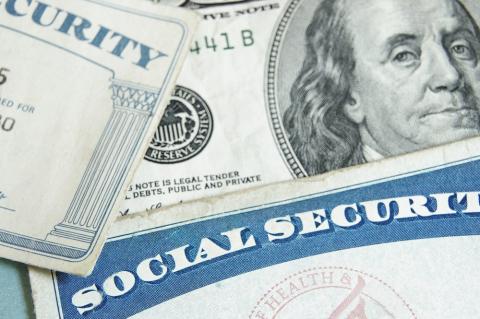Over 5 years of researching the financial mess familiarly known as “Social Security,” I have found one constant. At some point in the discussion, opposing sides will be reduced to labels. The program is either a “Ponzi scheme” or “the greatest invention of government.”
When these tags come out, it is time to go home. Trust me, the discussion is over. These labels are less about adding insight to the debate, and more about getting people to forward the emotion with someone else.
Is Social Security a Ponzi scheme? It depends. If you think of the term loosely to describe current investors relying on more future investors, it is.
There are, however, many of these operations around if you define the word so generally. On the other hand, it is possible to define the word so precisely that nothing qualifies.
Whenever Americans talk about Ponzi schemes, two names always emerge. Charles Ponzi, the man for whom the scheme is named and Bernie Madoff, now serving a 150 year sentence for investment fraud, personify the inner-workings of these scams.
While their names are used almost synonymously, these people have little in common. The only thing that these men visibly share is that fact that both personally benefited from the transaction. Of every dollar collected, some of it was likely going to end-up in the pocket of the operator.
Otherwise the men and their ploys could hardly be less alike.
Ponzi sold investors on a complicated investment idea that was guaranteed to make them large returns over a short period of time. Madoff sold investors on the simple idea of safety, promising stable returns over long periods of time.
Ponzi's scam collapsed under the weight of its own absurdity. Madoff’s ruse might still be running if not for the financial crisis spooking his prey.
Would Social Security have made Madoff proud as a widely circulated email claims? Probably not. While there are millions of people who believe that the government has raided Social Security to pay for everything from Vietnam to Starwars to Obamacare, there is almost no evidence that the government has made a dime on the program.
At this point, the program holds nearly a reserve of $2.9 trillion in government securities. That sounds like a lot of profit until you consider where the money originated. $1.9 trillion of it comes from interest and interest on interest. Another $600 billion was government subsidies to the system from the General Fund. In English, most of the trust fund actually represents a cost to the government.
So what happened to the money that was paid in? Most of it was spent on beneficiaries. Since inception, the program has collected roughly $14.8 trillion in payroll taxes, and has distributed about $14.5 billion, (see data). In other words, every penny in excess contribution ever borrowed from Social Security, roughly $250 billion, has been spent on one program: Social Security.
Some people argue that Social Security has subsidized the government through lower borrowing rates. It is possible because Social Security has created a pool of capital locked into buying government securities. The downside of this argument is that the bonds held by Social Security tend to earn more than a market rate.
Barring seasonal shifts in the bond rates, the government isn’t making a killing on the program.
It is true that early “investors” made money. Many cite the first beneficiary of the program, Ida May Fuller, who collected a nearly 100,000% return on her lifetime contribution of less than $25. Of course, she also lived nearly three times as long in retirement as an average retiree of 1940 and benefited from a series of expansions to the program via congressional mandate.
As a consequence, it is exceedingly difficult to separate the residue of the Ponzi scheme from the pork in congressional politics.
People call Social Security a Ponzi scheme in large part because they are frustrated with a program that has been spinning out of control for nearly 8 decades, and they feel powerless to do anything about it. Of course, the label does not help anyone understand the staggering imbalance between what the program has promised and what resources the program has. Nor does it contribute a dime to the resolution.
In fact, the label generally ends the discussion of what the problem is and how to deal with it. That is a problem.
